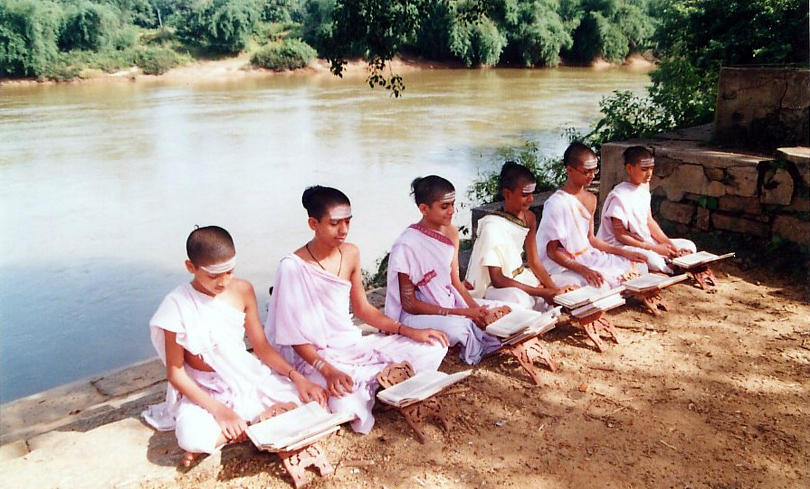
The Vedas form the foundation of Hinduism according to Sanatana Vaidecai. In the conventional Gurukula system, Veda Patashala was formed for the study of the scriptures. To preserve and spread the Vedas is the mission of Veda Patashala.
The Vedas are a large collection of religious writings written in Vedic Sanskrit. The books are both the earliest Hindu scriptures and the oldest body of knowledge in Sanskrit. The Vedas are thought to as anaadi, or without a beginning. It can be inferred from this that it has existed forever. Hindus also believe that the Vedas are apaourusheya, which is Sanskrit for “of non-human origin.”
It is believed that Eshwara, God did not create the Vedas,and that the Vedas have existed since the existence of Eshwara.This implies that they are one and the same.
The Sanskrit word ‘Veda’, means knowledge. The Vedas are also referred to by some as Shruthi, that which is heard. It is believed that the sounds of the Vedas always surround us and that Rishis received the Vedas once they were properly attuned to it. The Vedas were always passed on via word of mouth from Guru to Shishya. This vast knowledge was divided by the great Veda Vayasa into four. They are Rig Veda, Yajur Veda, Sama Veda and Atharva Veda. The final part of all these four Vedas is the Upanishads.
The Upanishads are also known as Vedanta.Learning the Vedas and practicing the teachings involves the entire body. Thus, Vedas are believed to have organs,the Vedaangas. There are six Vedaangas. Siksha – the nose or lungs of the Veda Purusha , Vyakarana – the mouth or grammar of the Veda Purusha, Chandas the feet of the Veda Purusha, Niruktam – the ears of the Veda Purusha, Jyotisha – the eyes and Kalpa the arms of the Veda Purusha.Out of the 14 Vidyas, 4 are Vedas, the 6 Vedaangas the remaining 4 are Upaangas, subsidiary or secondary limbs. These are Meemaasa, Nyaaya, Puraana and Dharma Saastra
